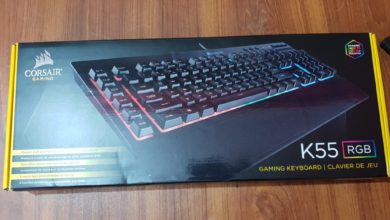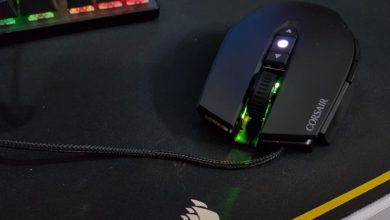In recent years, the DDR4 development has taken the benching and overclocking world to whole new level. Corsair has released many powerful memory variants, specifically for DDR4 platform. Vengeance LPX, in particular, falls in an efficient and highly recognized variant that is loved by most PC builders. Not to mention their outstanding LED variant DRAM that has brought the attention of gamers as premium outlook. On the other hand, the recent achievement talks on 4600 MHz being considered as fastest ever Vengeance DDR4 kit from Corsair. However, it’s not in question here, as we have Vengeance LPX DDR4 3000 MHz RAM modules in the house.
Today, we are looking at Corsair vengeance LPX 16 GB DDR4 3000 MHz RAM kit. The Memory comes in a 2*8GB set, that offers highly efficient, operating at 1.2v and with read/write at timing sit at 15-17-17-35 under 2T command (by default). The RAM module support Extreme memory performance (XMP) 2.0 that offers unbeatable stable overclocking On-the-Fly. Built for highly overclocked systems and it’s compatible with all Intel DDR4 platform.
What’s new in DDR4
- High density: 16GB Module
- Lowest power consumption: 1.2v
- High speed module, 3000 MHz, easily available.
- 4600 MHz Module already in the market.
Feature Highlights
- 100% compatibility
- XMP 2.0 Support
- Aluminum Heat Spreader
- Design for high overclocking
- Low-profile design
- Collaborate with system’s theme
The Unboxing and Stuff
As usual, we start off with box outlook. The Memory sticks comes in a compact box. The front of the box is stylishly designed for an excellent appearance. We actually loving the yellow and grey combination of color scheme on Corsair product packaging. We recently reviewed their K70 Keyboard, and similar aesthetics has been seen on that, too.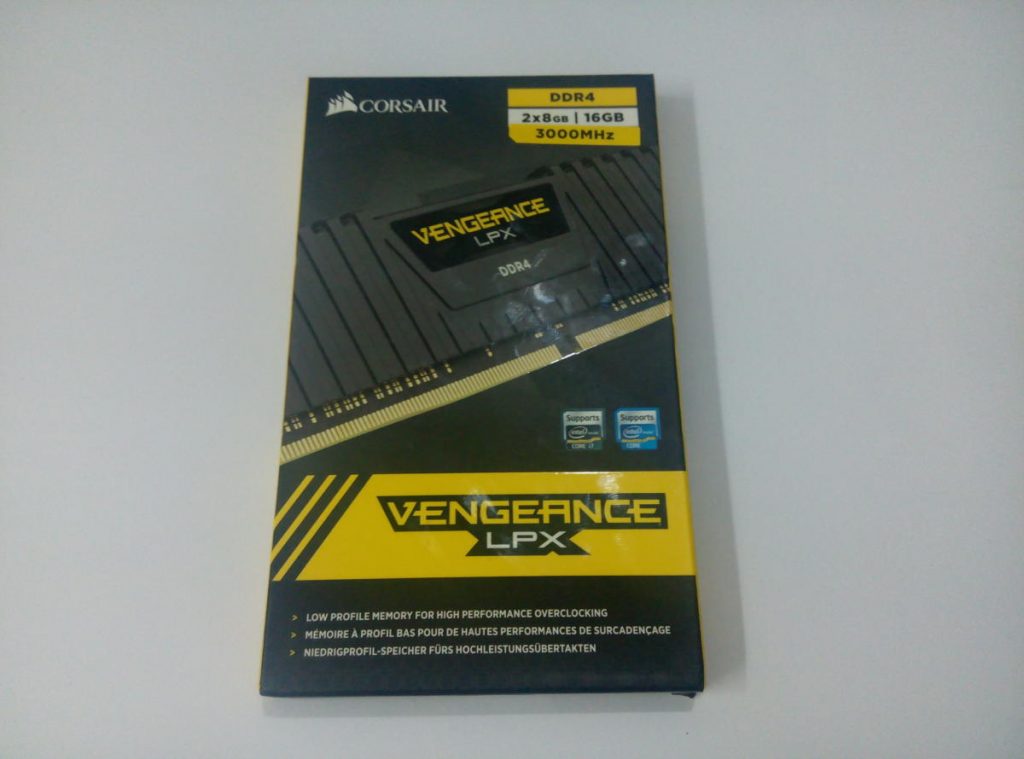
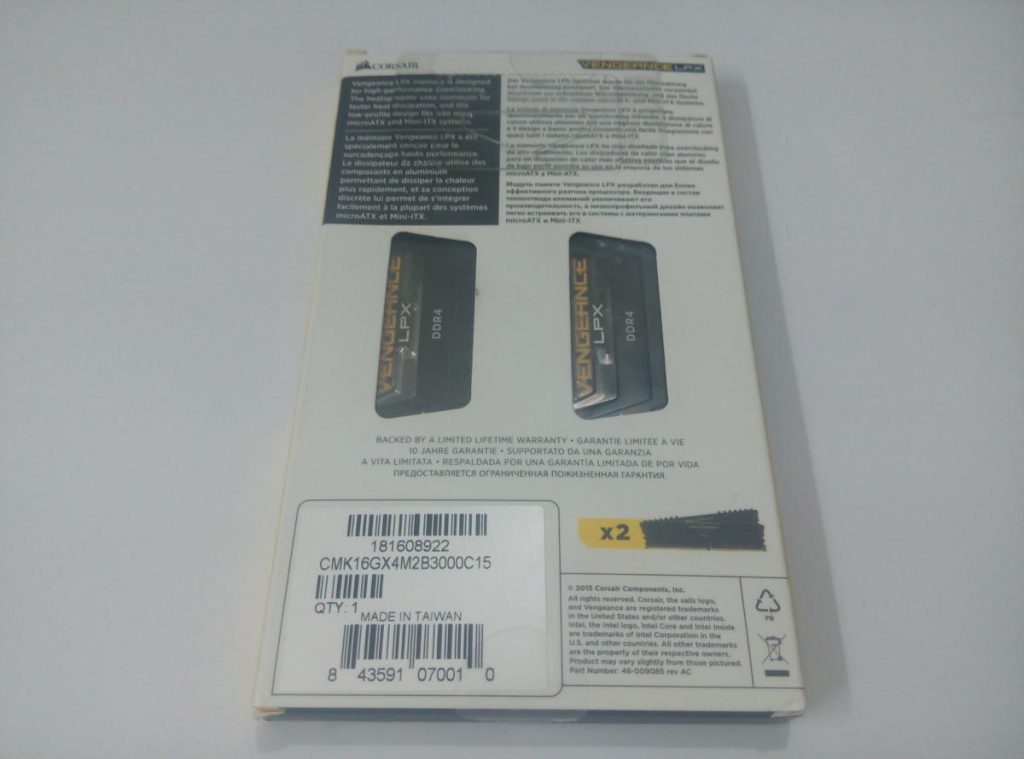
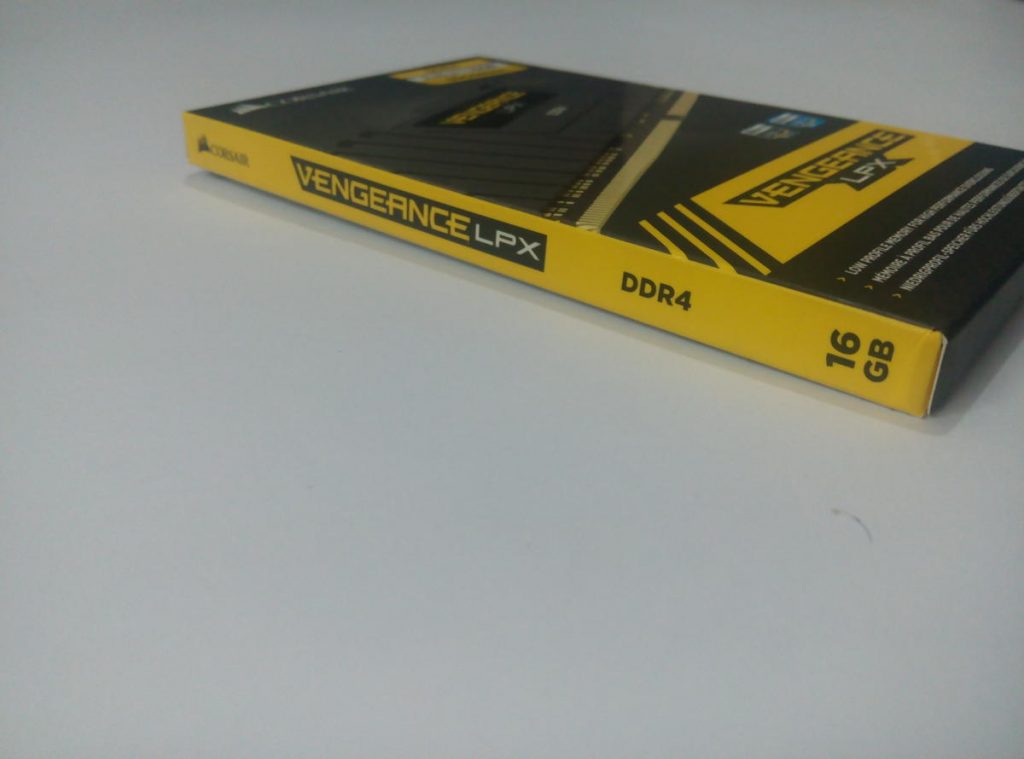
We must admit the designing at Corsair has been excellent whether its packaging or product itself. Looking at the box, Corsair logo and Memory specs located at top, while the lower part displays vengeance LPX on yellow bar and a marketing line “Low Profile Memory for High performance Overclocking” for this RAM just below to it. The DRAM module pictured in the middle for final touch.
In most DRAM box packaging, there is a small window that purpose a look-inside, usually on front. Well, that’s not the case here as Vengeance, in contrast, has a dual window on backside instead. The lower part consists of barcoded sticker has printed on it the Model number and Made in Taiwan. There is not much to talk about the else. The side have similar printed text on a yellow base..
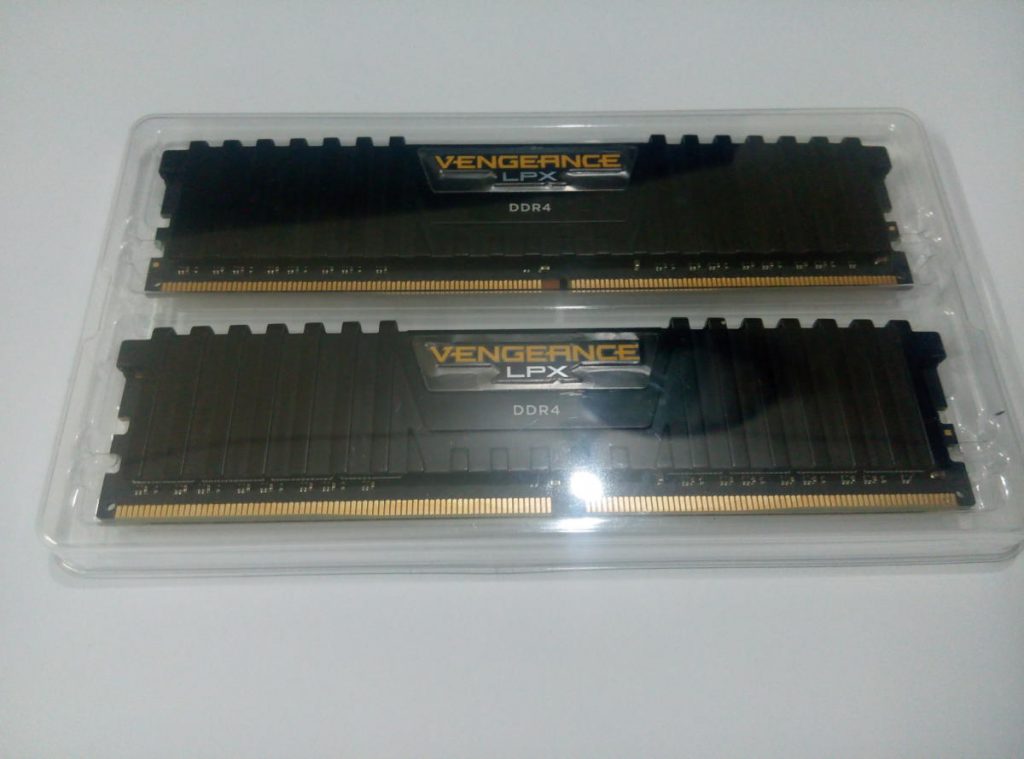
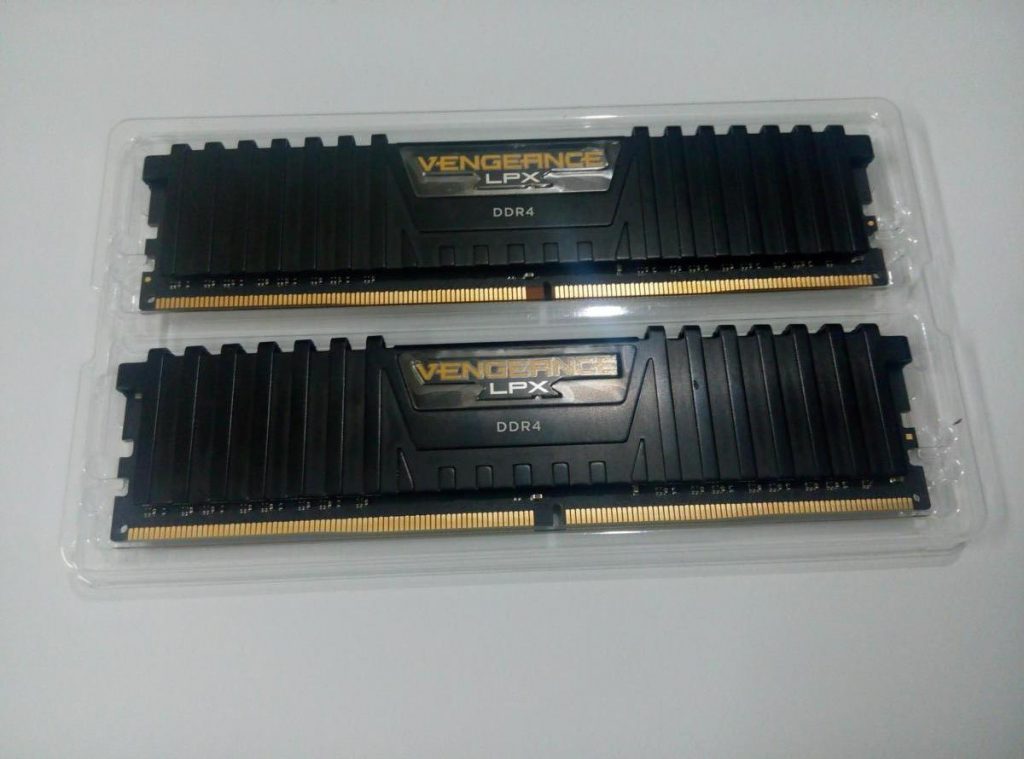
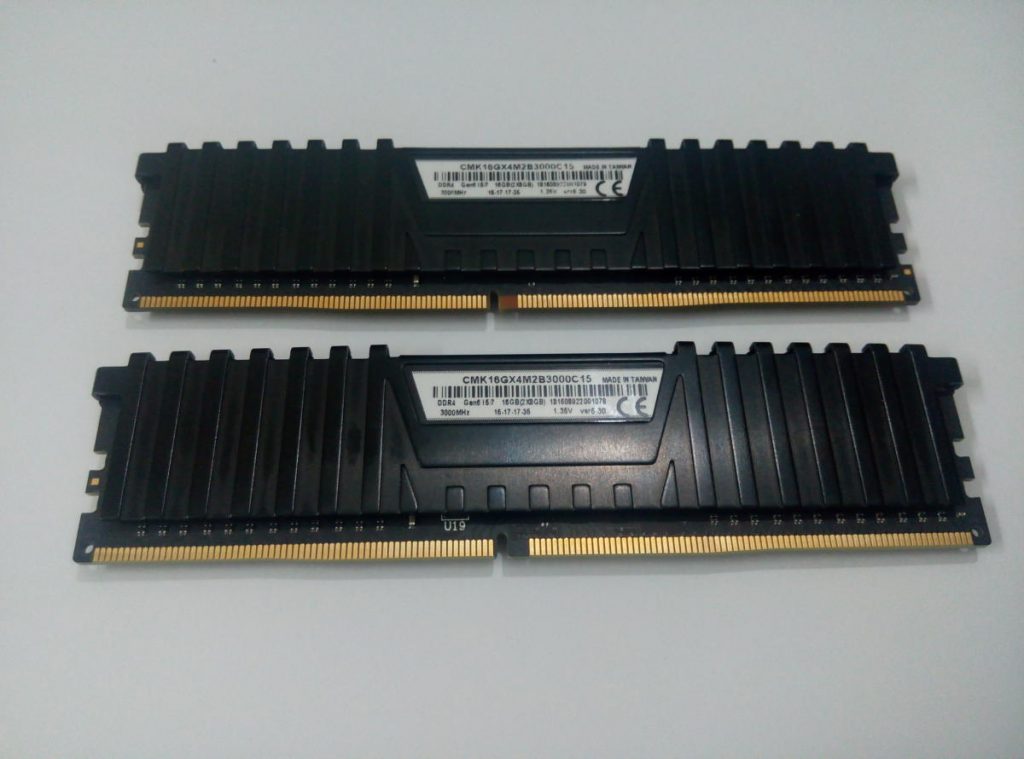
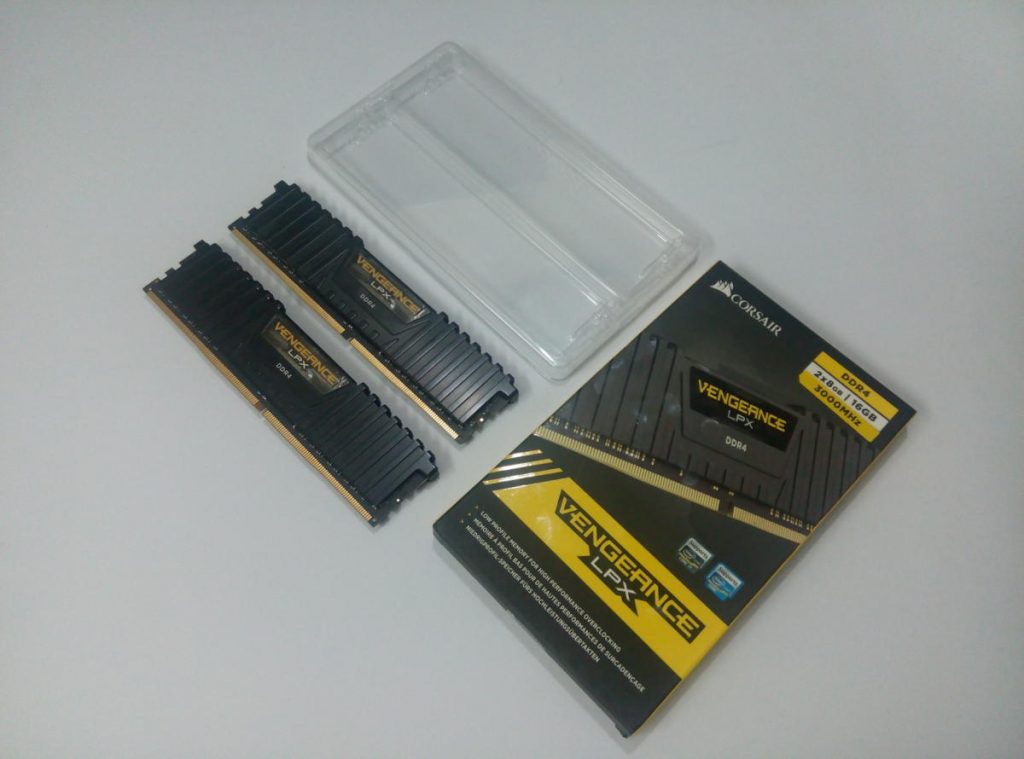
Once we open the box, we see the Plastic tray or maybe you can call it a plastic box that has a couple of RAM sticks vertically bed inside it. This is quite familiar RAM packaging that every RAM manufacturer used for their products. We took the RAM stick out and the first glance on the naked sticks is quite satisfactory. However, this is quite interesting to see nothing else except the modules. Indeed, surprising for me, because we mostly get a tiny manual and a brand sticker as extras packed inside, but it looks like they are not interested in giving away any extras.
Design
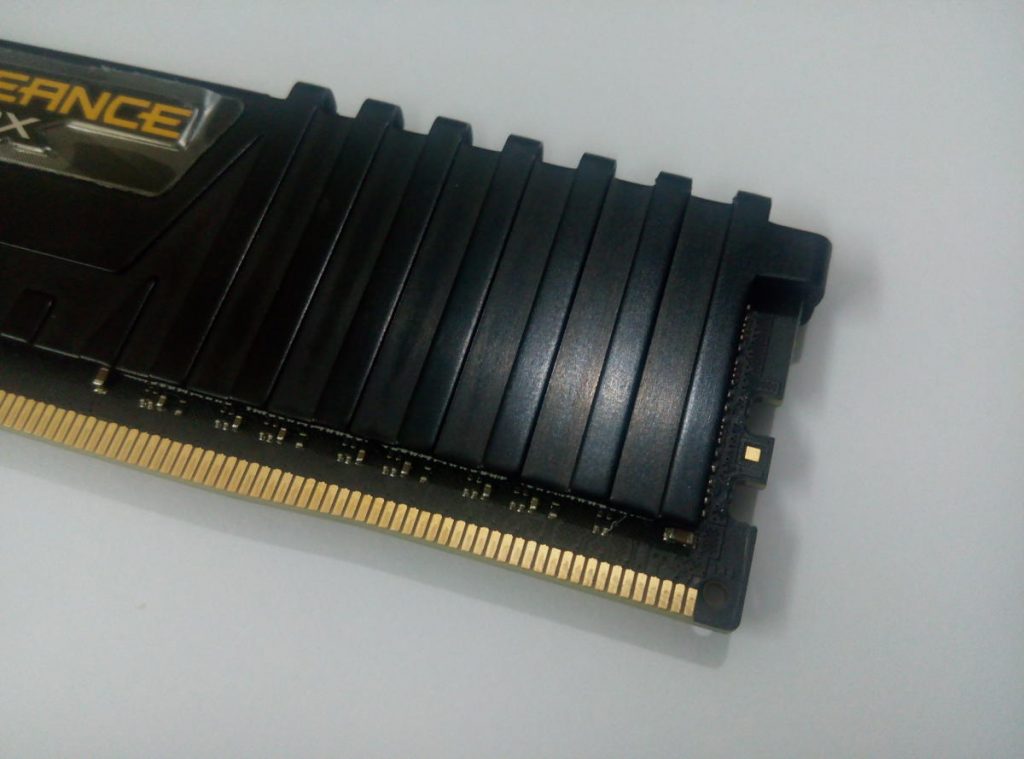

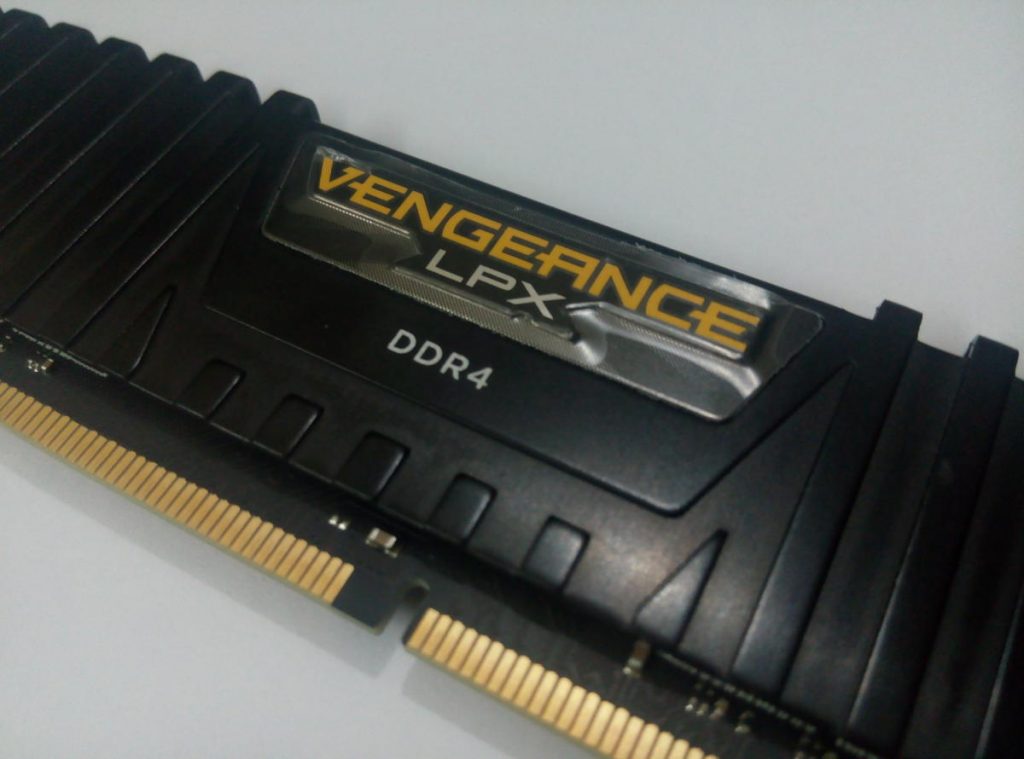
Now looking at the modules, we can see the black heat spreader more like a container design. The heatsink is made of pure Anodized Aluminum being wrapped on PCB. On the front, the vengeance LPX (series name) designed in middle with DDR4 (interface) right below to it. This actually a great looking combination as the Vengeance in yellow completely reconciling with the Gold key bottom of the stick. It’s a low-profile gaming heat spreader that offers maximum compatibility to most gaming rigs, including the mini-ATX systems.
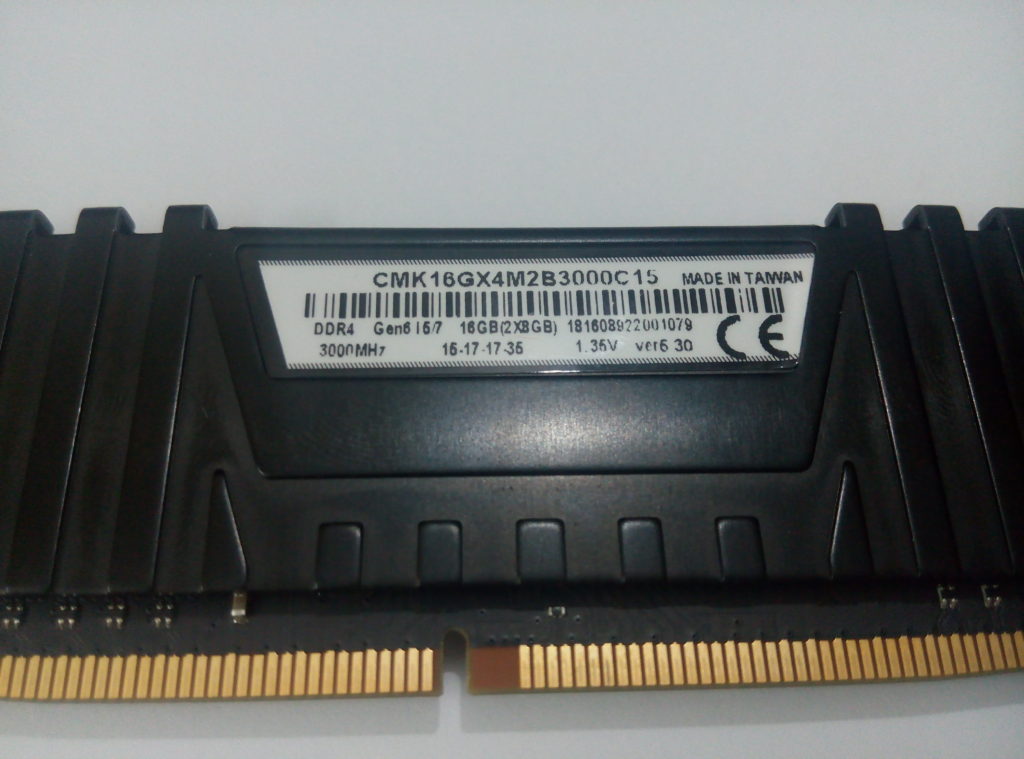
The backside of the heat spreader is same, but the white sticker, more of a barcoded sticker having basic specification printed on it. we do not see anything special with the design, it’s just simple enough to say that, however, internally it might impact on dissipation.
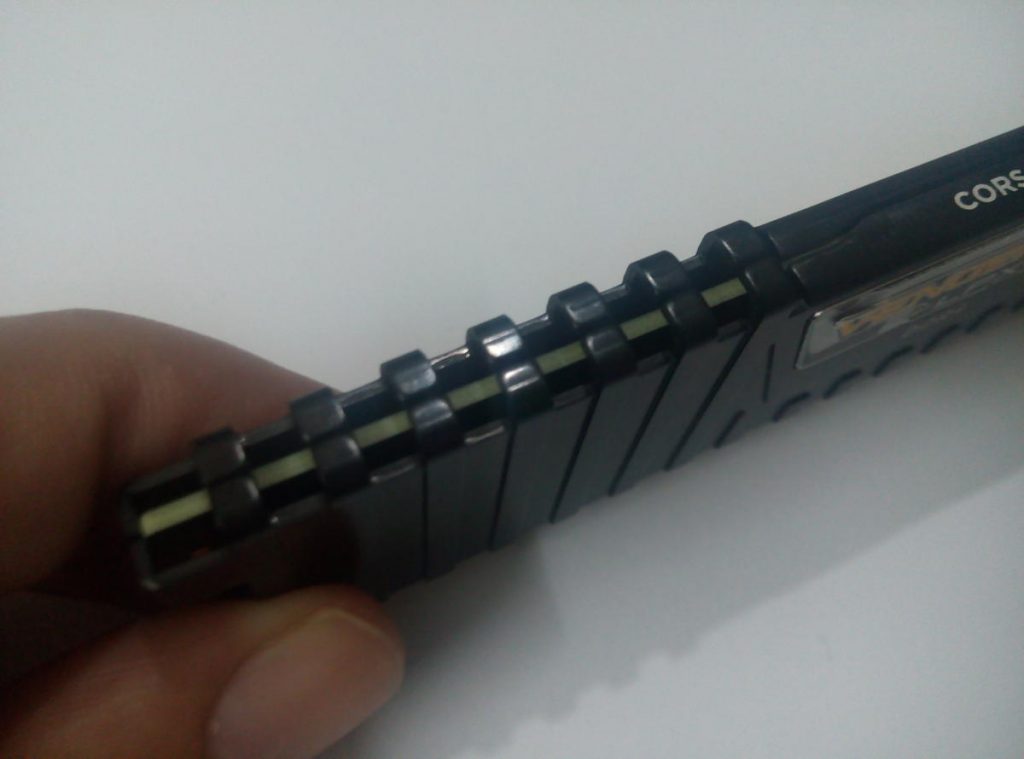
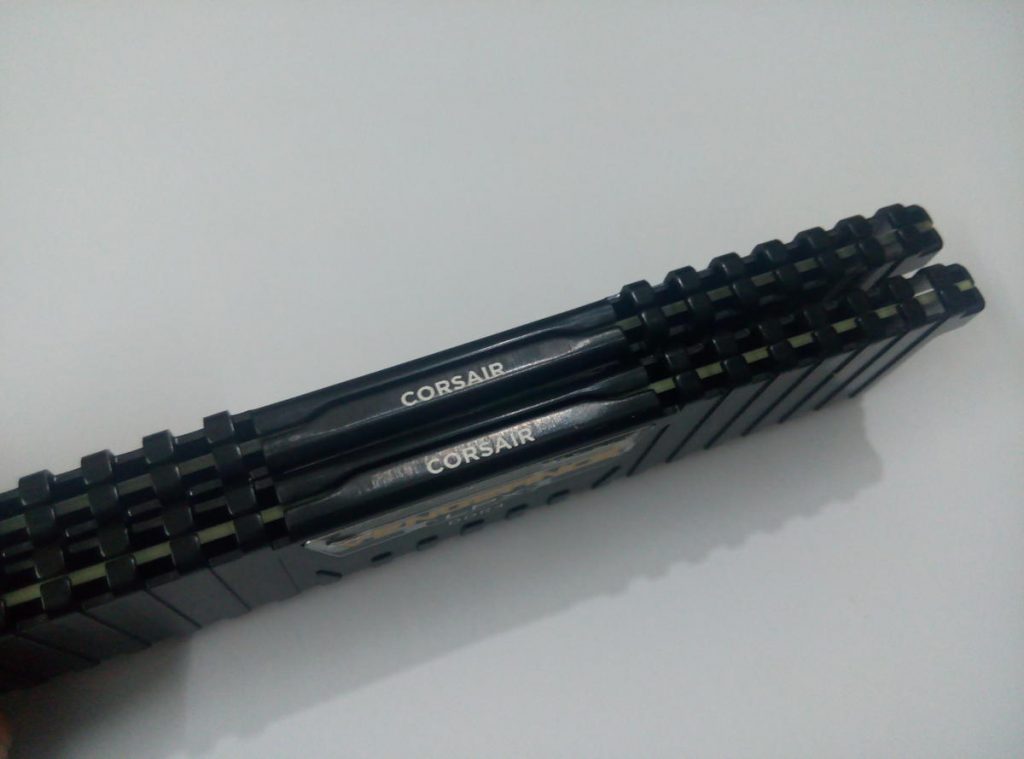
The top view is interesting. while the two side heatsink is in joint from top, the company name “Corsair” is being printed in white in middle which accommodate a delicate look when sticks are collectively installed on motherboard. This is also worth noticing that heat spreader is opened from top, where PCB layer can be seen. It looks a bit cheap, but could be an effective design in terms, it quickly dissipates the heat from top allowing low room for heat to be sit inside.
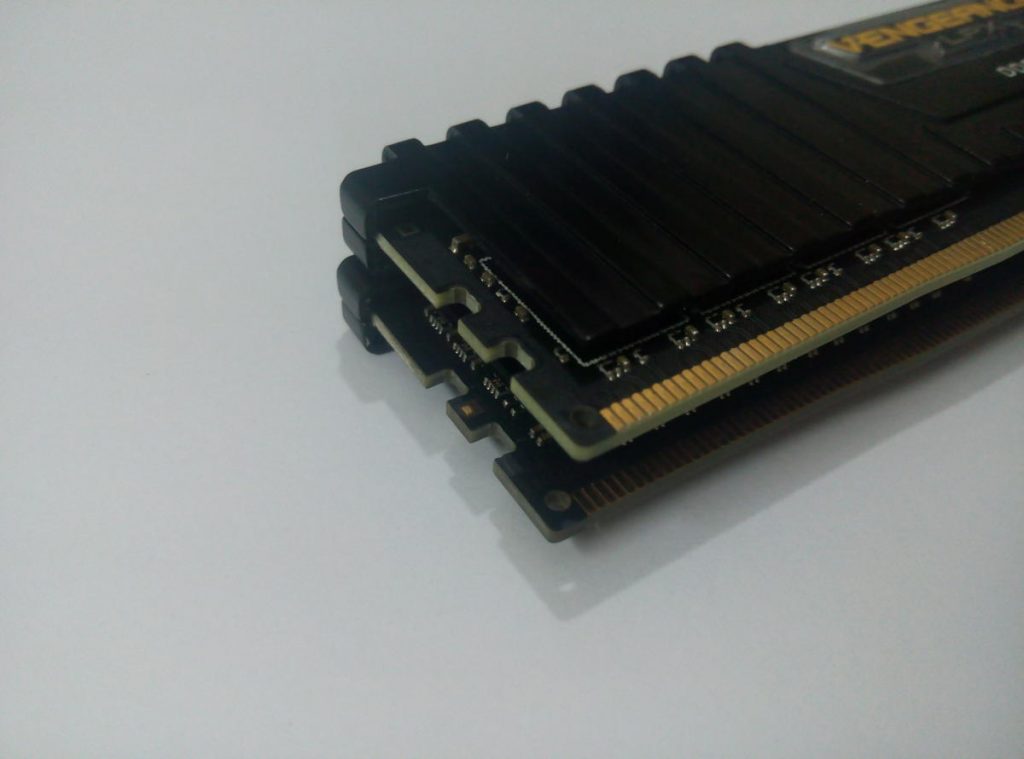
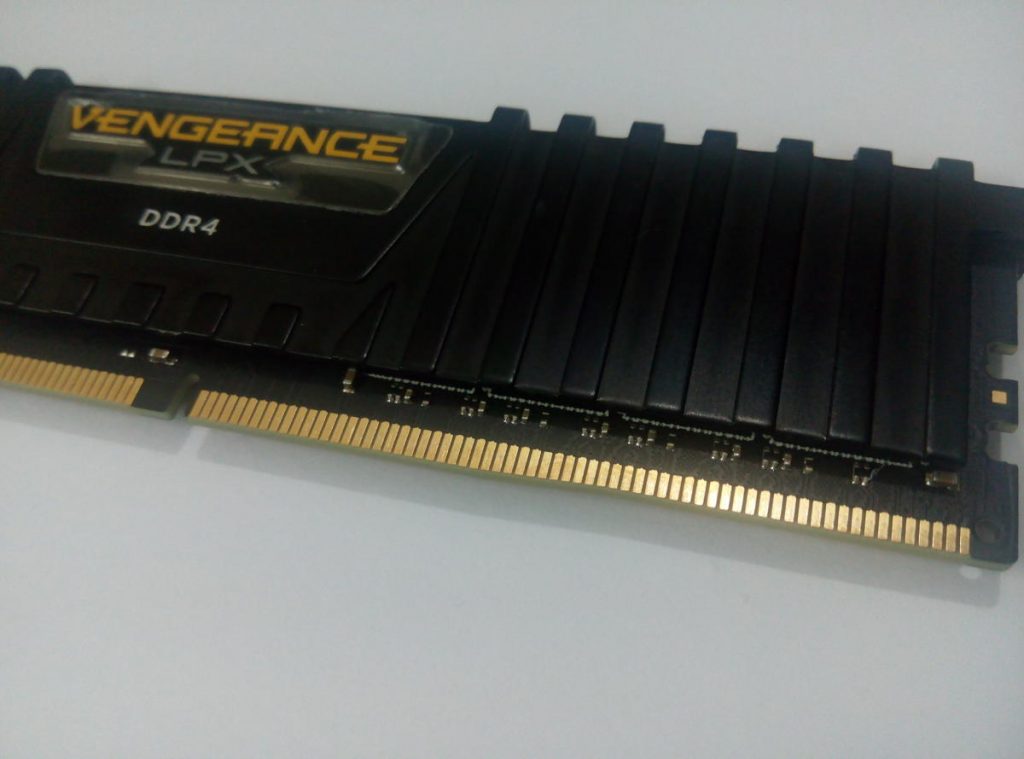
The PCB inside is black in color scheme with GOLD rail. An 8-layer PCB, runs at 3000 MHz with power consumption at lowest 1.2v voltage and maxed out at 1.35v by XMP 2.0, ensures absolutely stable overclocking. Keep in mind, PCB having higher number of layers always has better performance however, that comes with increasing manufacturing cost, too. The standard layer design of DRAM PCB is 4-layer, while there are also 6-layer design which is already adequate for the purpose. With 8-layer design this module is a premium.
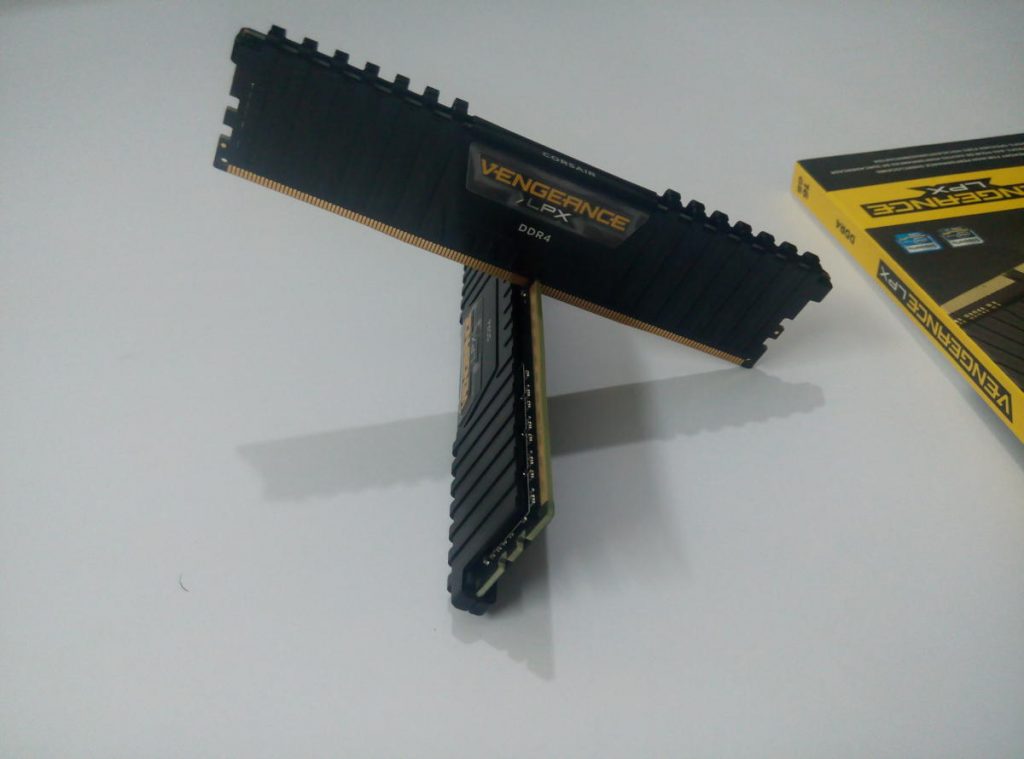
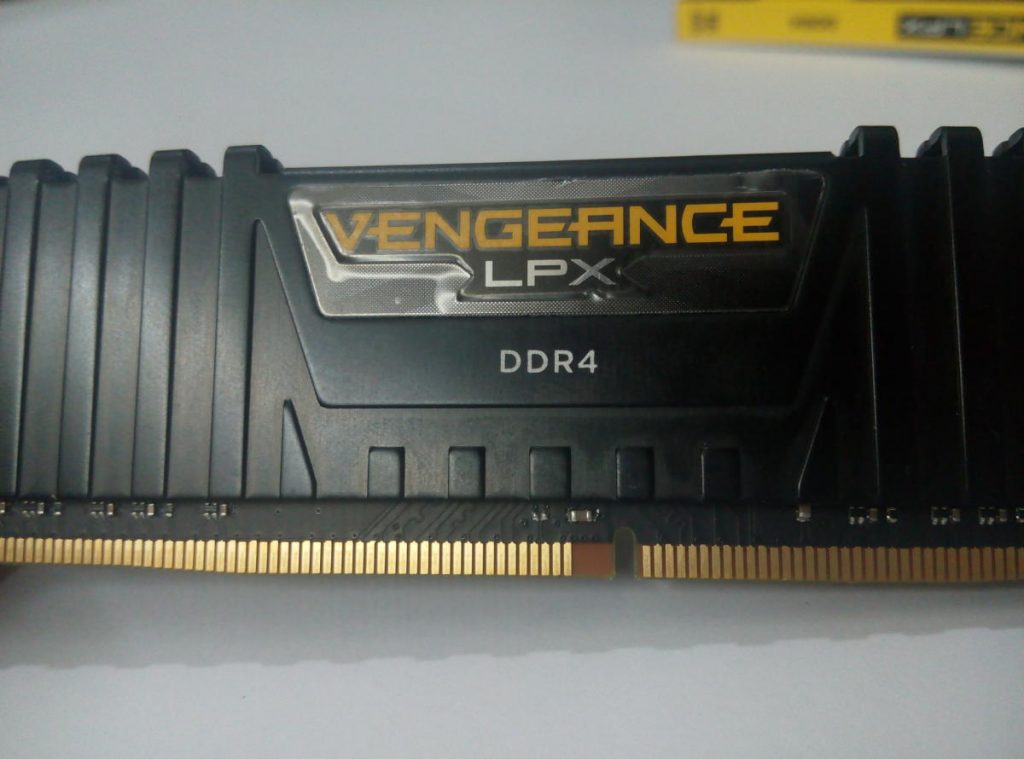
Looking at the height, as it’s a low profile RAM module, it does accommodate even mini-ATX system where space between components is more like a premium. We measured the height and it returned a 33mm or 3.3 inches high, a standard low profile design that even remove any chances of being obstructive to the CPU cooler fan unlike some of the heighted DRAMs. So overall, Vengeance LPX is an excellent low-profile gaming module with unmtached compatibility design.
Final Look

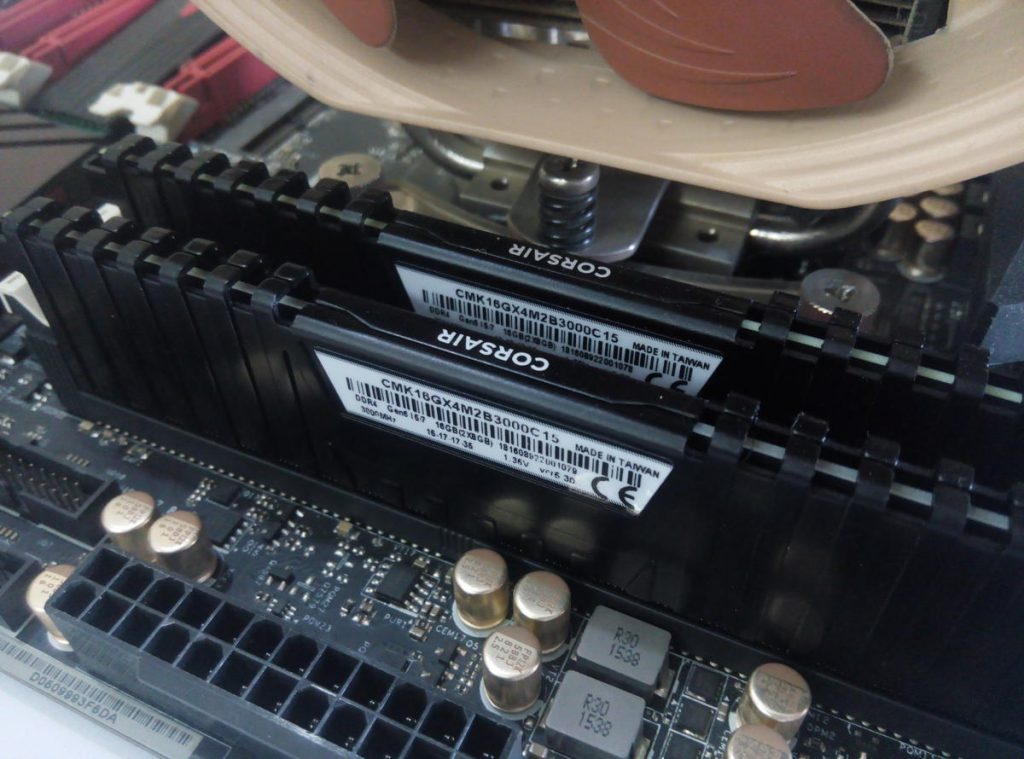
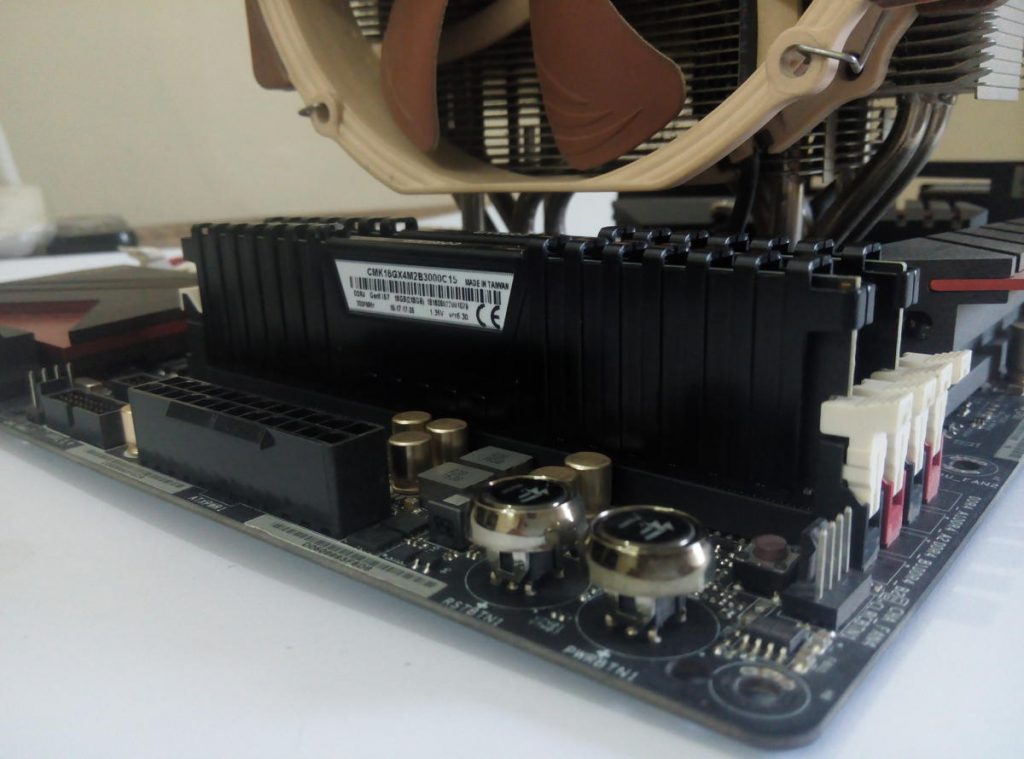
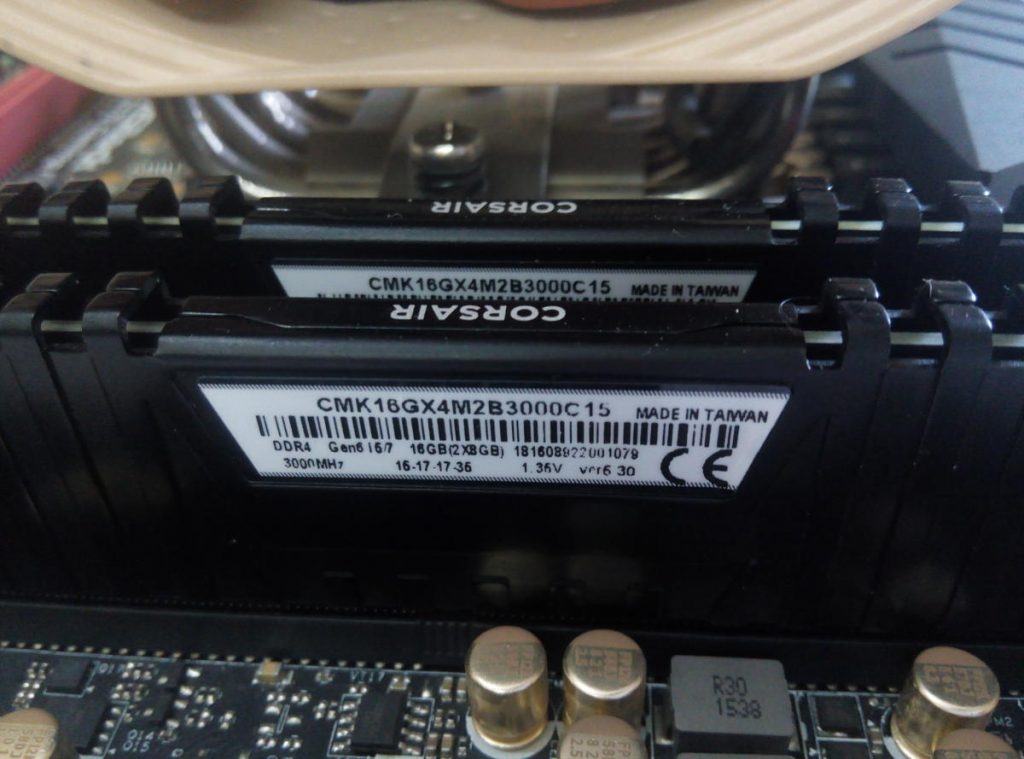
Compatibility and Support
The Vengeance LPX RAM modules have the highest compatibility not only spacious wise, but he platform. Being compatible with Most Intel platforms, includes Intel series 100, 200, 300 and also, the x299 based extreme end PCs.Based on latest performance profile, the Vengeance LPX DDR4 is Plug N Play modules. Gone are the days when for 100 MHz we bump the BIOS multiple times. Extreme Memory performance (XMP) 2.0 support has now made overclocking far like a piece of cake. The XMP 2.0 is On-the-Fly overclocking that takes control from manual overclocking to One-Switch, automatic overclocking. Well, we are expecting this Module to reach 3200 MHz without any trouble. Find the overclocking results in later chapter.
Test Bench
- Asrock Z170 Professional i7 Gaming
- Intel Core i7 6700K 4.0 GHz
- Corsair vengeance LPX 16GB DR4 3000 MHz CL15 (Reviewing Sample)
- Intel HD 4600 Graphics
- Plextor M9PeG 256GB PCIe NVMe M.2 drive
- Seagate 3TB 7200 RPM Hard drive
- Samsung 850 EVO 256GB SATA III SSD
- Enermax Revo X’T II 650W GOLD PSU
- Noctua NH-U14S Air Cooler
- Corsair Obsidian 750D Full-Tower Case
List of Programs
- AIDA64 Extreme 5.92v
- Cinebench R15
- Hyper Pi 1.099b
- Firestrike 1.0v
- WinRAR 5.20v
Procedure
We used several programs, specifically designed to gauge DRAM performance. All the synthetic numbers gathered via multiple programs by having Sample RAM at stock frequency. To realize the bandwidth and speed performance in numbers we are using AIDA64 that will give us the quick results mainly on read/write spectrum and of course, the Latency rate. There are a couple of programs which output nearest to the real world performance, that also been conducted as per our methodology. Lastly, there is almost unnoticeable difference in real world applications like in games. Therefore, we didn’t include them in the benchmark charts.Comparison RAM Kits
- Kingston HyperX Fury 16GB DDR4 2666 MHz CL15
- Patriot Viper 16GB DDR4 2666 MHz CL17
Results

AIDA64 program is quite useful in ascertaining performance of RAM via Read/write speed in MB/s plus, it also tells the access time of a module.
Our ranking chart shows; vengeance LPX 3000 MHz already outperformed the competing modules. The only reason it leading, is the High speed (3000 MHz) sitting at CL 15 which considerably one of the best configurations out of the box.
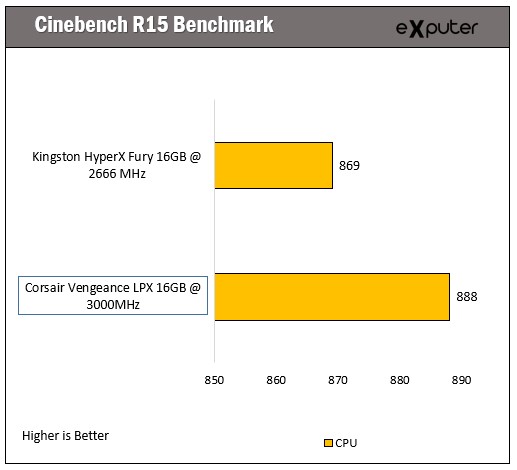
Cinebench is somehow very effective program in exhibiting CPU performance in conjunction with the memory impact. The sample RAM produced 888 cb on CPU, which has beaten Kingston HyperX Fury by some margin.
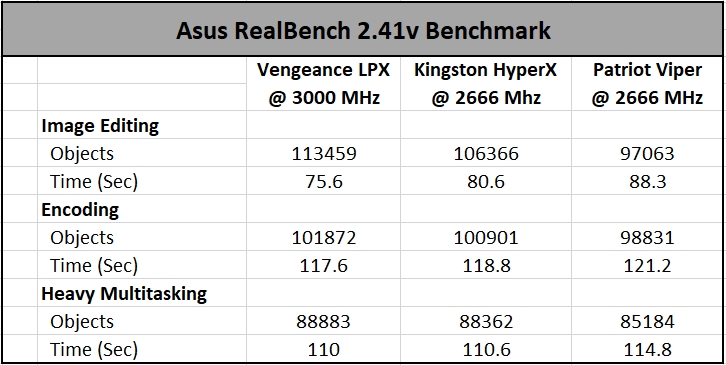
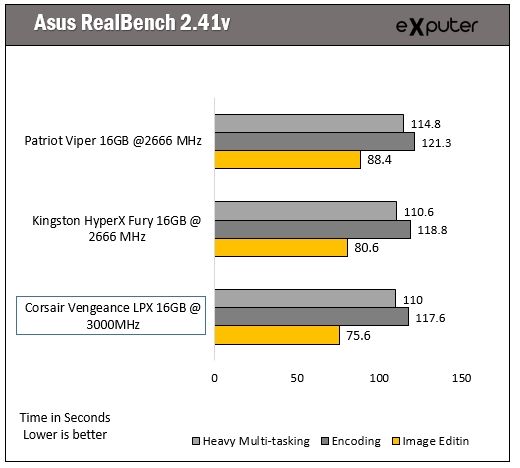
Asus Realbench is a detailed software/benchmark, that offers highly extensive program testing for hardware. The main focus of the program is to gauge CPU and Memory performance, while tough stability testing available for overclocked CPUs. We have focused mainly on CPU + Memory extensive task that includes image editing, encoding and heavy multitasking. It seems like Image editing takes more advantage of faster RAM unlike the others.
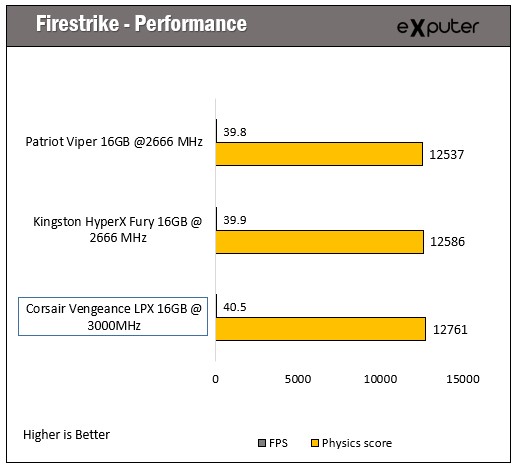
Next is the Firestrike benchmark, more of gaming perspective application but with synthetic results. Since DRAM is majorly work alongside CPU, we readied the benchmark to acquire physics performance in the benchmark. According to above chart, the Vengeance LPX with faster bandwidth outperformed the modules in comparison by miles.
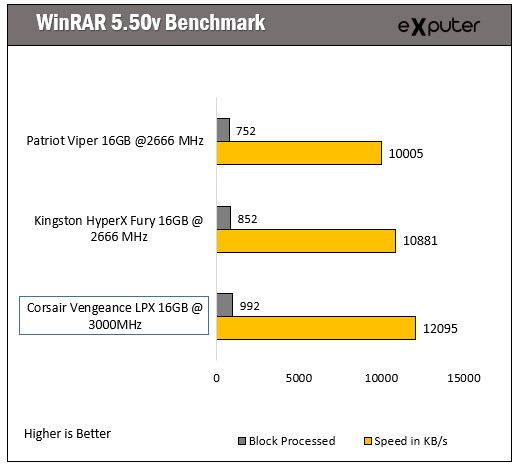
With far better memory bandwidth coupled with Latency CL15, the Vengeance LPX DDR4 was expected to beat the modules in competition. So it did. We went with another yet kind of real world application, WinRAR, that pulls full advantage of highly overclocked CPU and the DRAMs, processed 992 blocks at a speed of 12095 Mb/s.
The Overclocking
Given the above results, Vengeance LPX has already undoubtedly a better product. But without overclocking, we cannot see a full compilation of our testing. in this chapter, we will gauge the possible future potential of its maximum reaching point in terms of speed and operating voltage.
The XMP 2.0 overclocking is a piece of cake which is effortless and time saving. For beginners, XMP 2.0 is a great privilege. However, enthusiastic class who have been into extreme overclocking having efficiency in mind, manual way of overclocking is most preferred. So we went with the manual overclocking.
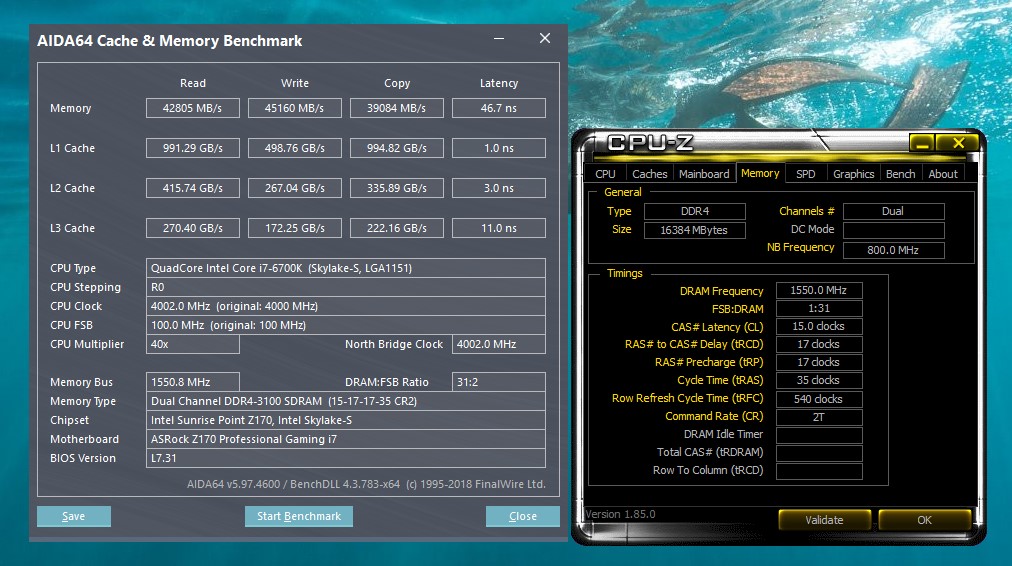
We started off with bumping into BIOS on a first go, and begin overclocking the sticks by an increment of 100 MHz, we set the voltage straight at 1.35v for this 100 MHz increment. We didn’t touch the timings as they are sitting at 15-17-17-35 with CR2. Done and reboot. It was a fine overclocking, since we didn’t go too far.
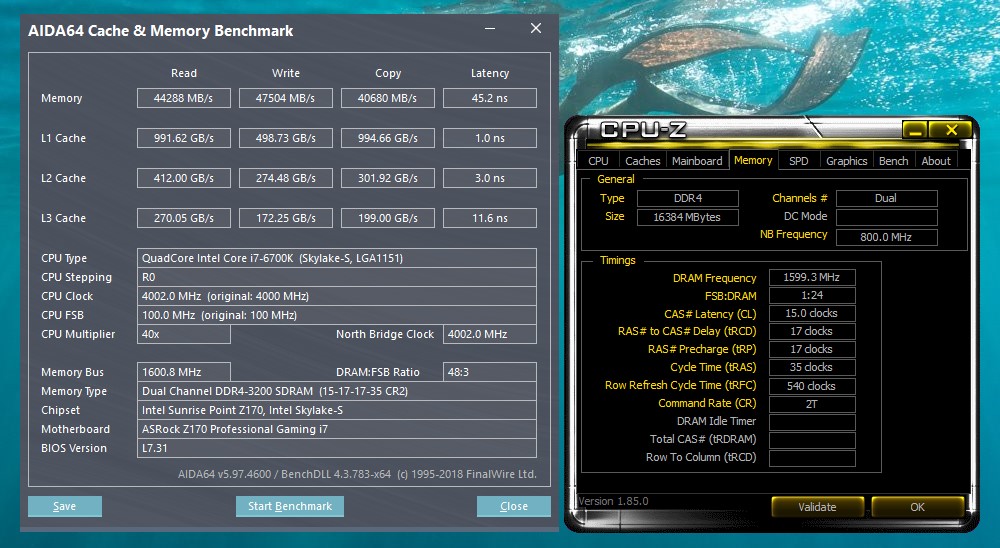
We bumped another 100 MHz without adding more voltage and kept the timing at 15-17-17-35, we managed to run AIDA64 memory and cache Benchmark. The resulted figures can be seen in above screens and they are quite satisfactory. With same timing but higher bandwidth, the latency rate stood at much improved 45.2 ns with increased read and write speed. Once we tried another bump, which took us to 3333 MHz, we received no display and behavior was rather strange. So we stopped at this point. Albeit, that could be achievable but timing and voltage need to be tweaked a little more. Yet there is no guarantee, besides, huge risk involved. Therefore, we are happy at 3200 MHz and that’s being done without any trouble.
Vengeance LPX DDR4 is a great induction to the consumer market. Corsair has not only focused on its performance, but the size of heatsink, too. Designed to manage to fit in even low end PC where the space between the component is a premium. We liked the LPX design, not because we are reviewing it, but it’s low profile design actually favors most PCs, even mini-ATX too. A plug N play module offering high overclocking support via XMP 2.0 switch. That is, by all means, a great privilege for beginners as well as enthusiasts’ party because it saves a lot of your time.Vengeance LPX does look decent, however, it lacks one trending feature, LED/RGB. We are not sure if every PC builder would be looking for RGB/LED Stick for DIMMs, but one thing is sure, that simple, bold looks on Memory sticks still welcome by most gamers. Besides, you won’t find such low profile module packed with high speed coupled with overclocking potential in one kit in RGB category. Performance wise, Vengeance LPX running at 3000 MHz, just opened more room for high performance. Performing at a speed of 3000 MHz that outcomes much better read/write speed and stock latency was too good.
Now question is should you buy more capacity or high speed modules? Well, we have seen the behavior of RAM consumption in games that sometimes peaks out at 8GB, that makes it a minimum requirement for today’s standard. You definitely don’t want your workload to be bordered with RAM Limitation, considering this, 16GB is what you should opt for. Simultaneously, if you are also into heavy rendering, video creation and large image editing work, then you must opt for even bigger Capacity unit, like 32GB.The high speed modules, on the other hand, perform always better to any lower, and the fact is, several high speed modules like 3000 MHz are pretty much at the cost of 2666 MHz module. Therefore, why not to get a better and faster unit.
Selling at $190 US Dollar on limited lifetime warranty on Amazon, Vengeance LPX DDR4 16GB is quite an impressive in performance as well as compatibility. Offers high speed stick i.e. 3000 MHz, out of the box, that gives an edge over 2666 MHz modules; with considerable overclocking potential, we have one quality product that perfectly made for ultimate overclockers. Yes, this low profile gaming RAM kit has no RGB, but it looks decent; would cater most of the PCs, and that include mini-ATX, too, with zero drawbacks. We believe, our Reviewed sample has a great value in every way. Therefore, if you’re looking for dual channel, high speed kit without overspending on the DRAM, Vengeance LPX DDR4 is definitely recommended.
Note that, price point in US Dollar has been changing from time to time, and even day to day. What you see today, might not get for same tomorrow. So it all depends on the day you’ll order the product.
Corsair Vengeance LPX 16GB DDR4 3000 MHz
Score - 9.4
9.4
Recommended
Thanks! Do share your feedback with us. ⚡
How can we make this post better? Your help would be appreciated. ✍

